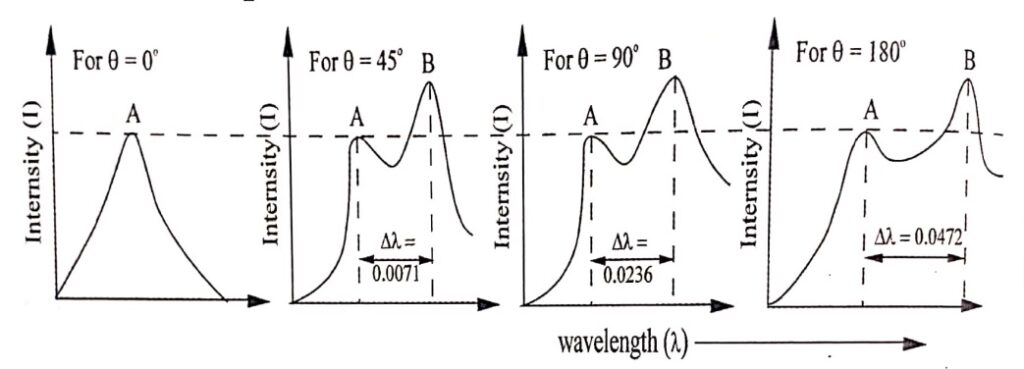-
A monochromatic beam of X-rays is produced from an X-ray tube and is made to pass through the slits S1 and S2.
-
These X-rays are made to fall on a Carbon block ‘ C ‘ which acts as scatterer.
-
A Bragg’s spectrometer can freely swing in an arc about the scatterer as shown in Fig. (A).
-
The scattering ofX-ray photon can take place in different directions and their intensities can be measured by Bragg’s spectrometer.
 Fig. (A) Experimental verification of Compton effect
Fig. (A) Experimental verification of Compton effect
- The experiment is repeated for various scattering angles and the scattered wavelengths are measured.
- The experimental results are plotted in a graph between relative intensities and wavelengths as shown in Fig. (B).
- When θ=0, there is only one peak, is called unmodified peak.
- Then, we observe that for each value of θ=45º,90º,180º there are distinct intensity peaks for the two wavelengths, one of which corresponds to the incident radiation (λ) and the other has a higher value (λ). The peak corresponding to λ′ is called a modified peak.

Fig. (B). Compton shift
- The difference between these two peaks on wavelength is called Compton shifts.
- The shift in wave length (or) difference in wavelength (Δλ) of the two scattered beams is found to increase with respect to the increase in scattering angle.
- At θ=90º, the Δλ is found to be 0.0236≈0.02424 which has good agreement with the theoretical results. Hence this wavelength is called Compton wavelength.
| Read More Topics |
| Heat flow through a compound media or wall |
| Method to determine thermal conductivity |
| Newton’s law of cooling |





